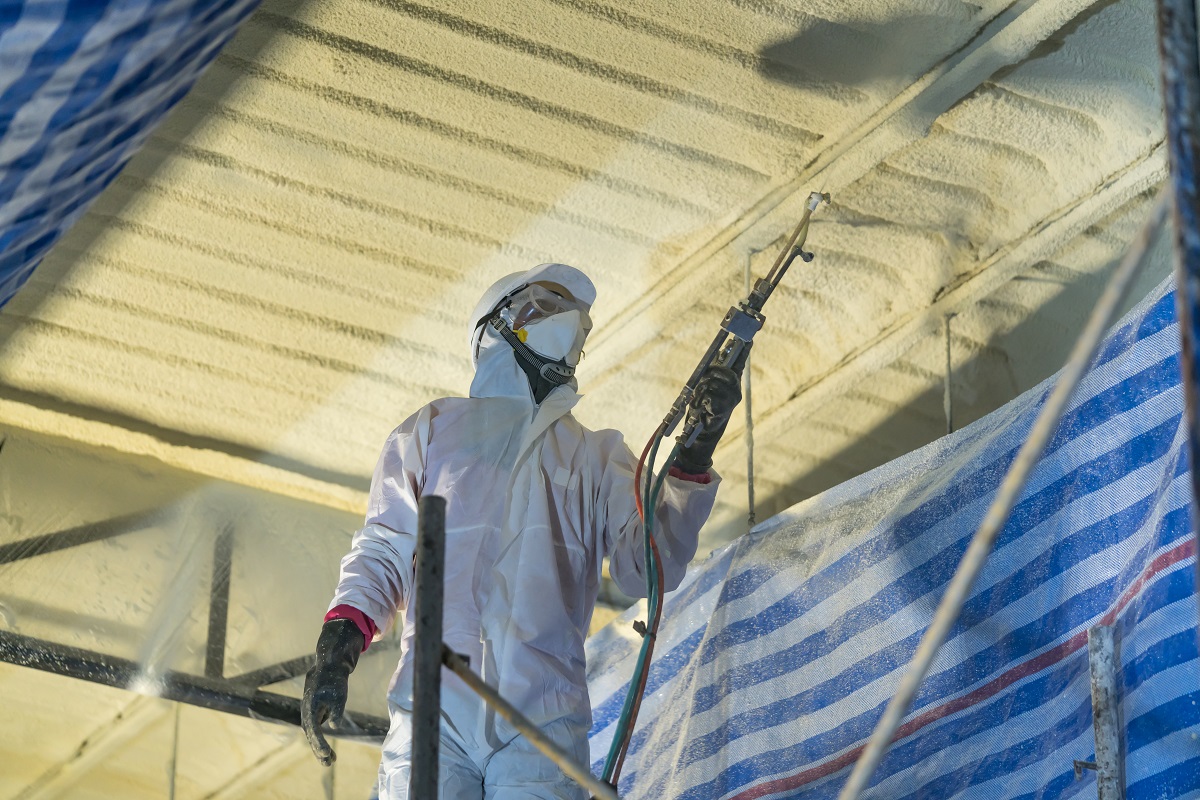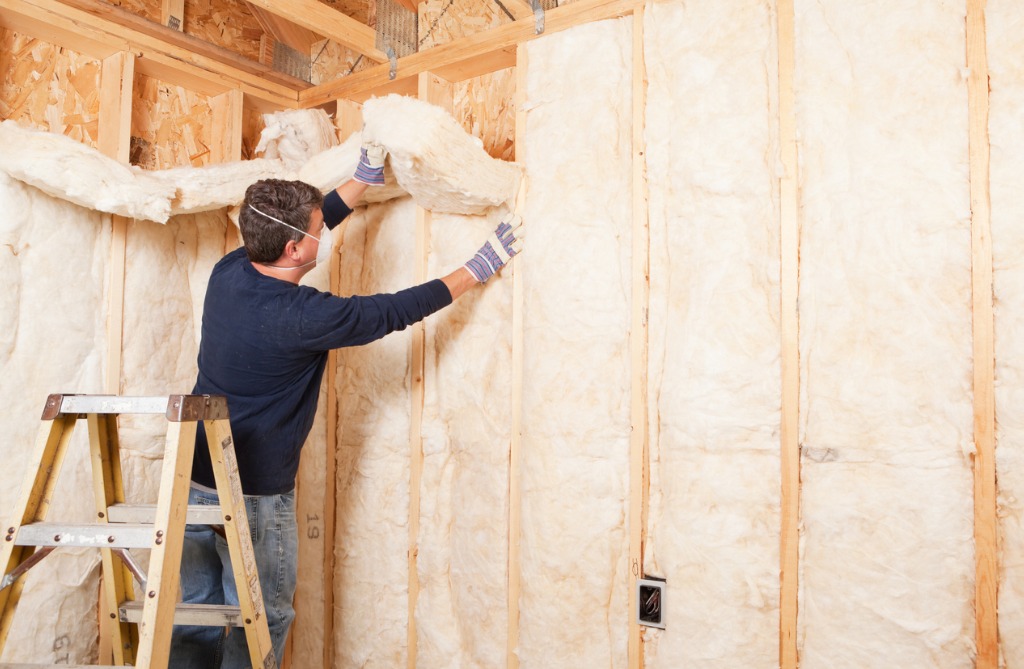 Homeowners who want to cut down on cooling and heating expenses need to improve their home’s insulation. A properly insulated home has an easier time keeping indoor temperatures consistently comfortable all year round. The home’s dependency on cooling and heating devices goes down, as well as its energy costs.
Homeowners who want to cut down on cooling and heating expenses need to improve their home’s insulation. A properly insulated home has an easier time keeping indoor temperatures consistently comfortable all year round. The home’s dependency on cooling and heating devices goes down, as well as its energy costs.
Today, insulation is part of the building process. Homeowners who are having their houses built should make it a point to have them air-sealed and properly insulated. However, many owners of older homes have found that their homes have minimal or ineffective insulation or have insulation with traces of asbestos. These homeowners will need to tackle the insulation problem in a remodel or a home renovation.
Before work can begin, your home will need to be inspected by a qualified home energy auditor, and you will also need to have an energy assessment performed.
The auditor will identify areas in the house that need air sealing before proceeding with any insulation work. Once the audit is complete, the next step is to find the right indoor insulation for the different areas of your home.
We always advise our customers to insulate their home from roof to ground for optimum energy efficiency and to take advantage of its other benefits, which we will discuss in detail later. First, we’ll take a look at the typical rooms in a home and find the best insulation material to use for those spaces.
Indoor Area: Attic
Insulation type: Blanket Batt or Rolls
Also good for: unfinished walls, floors, and ceilings
Loose-fill insulation provides great coverage, especially when installed correctly. It is relatively inexpensive too and good for those who would like to do the installation themselves, as this material is easy to work with.
If you are going to install insulation yourself, make sure to wear the appropriate protective wear. This is to prevent coming into contact with and inhaling fiber and small particles from the material. It may cause skin irritations and trigger respiratory issues.
Indoor Area: Living Room, Entryways
Insulation type: Spray foam insulation
Also good for: rooms with finished walls and rooms with irregular/hard-to-reach spaces
Spray foam insulation normally comes in cans with a nozzle attachment. The nozzle is small enough to reach into the nooks and crannies that would otherwise be difficult to fill with other insulation material types. It seals the gaps where air can pass through, preventing cold air or warm air from escaping the room, so it doesn’t leave your cooling and heating devices working overtime.
The spray foam is perfect for sealing gaps between the wall and window frames, including door frames. It’s also good for use behind an electrical outlet in the stud wall, before installing full wall insulation.
A word of caution: applying too much can cause the doors or windows to jam, as the applied foam expands after a few seconds of being exposed to air.
Indoor area: Newly Constructed Rooms, Under-Renovation Rooms
Type of insulation: Blown-in
Also good for: rooms with finished walls, hard-to-reach spaces, obstructed walls
Blown-in insulation is ideal for hard-to-reach spaces and finished areas. The blown-in technology provides better and faster coverage, especially in areas that cannot be covered by insulation sprays.
The blown-in foam absorbs sound and acts as a thermal barrier that helps rooms stay cool or warm for a longer period of time, as well as keeping the desired temperature with very minimal use of cooling or heating devices.
Ideal for renovation projects and DIY, the application is simple and straightforward. However, be careful not to spray too much material, as it will foam out as it dries and cover the stud wall surface. To achieve a thorough and more even coating, contact a professional to do it.
Indoor Area: Basements
Type of insulation: Foam Board and Rigid Foam Panels
Also good for: foundation walls, basement walls, floors, and ceilings
Foam boards or rigid foam panels are an all-around insulation material. It’s conveniently cut into widths that fit between standard stud gaps. The foam is a closed-cell material that offers a higher advantage in thermal conductivity compared to other insulation materials.
One drawback of using this material is that it leaves a bigger carbon footprint because it is made with poly materials. However, its insulation capacity makes it a good choice for sound-proofing and reducing sound absorption when you really need it.
For homes that are being renovated, it’s much easier to determine the type of insulation for each part of the home. If you want optimum results, it’s best to cover all your bases while the house is still being built and install the proper insulation from the outset.
Doing so also gives you the opportunity to assess if there is a need to add external insulation within a year, as you can test the internal insulation through the changing seasons.
Other Insulation Factors to Consider
Now that we’ve covered the ideal insulation material for each room type in your home, we’ll take a look at the important factors to consider when planning to insulate your home.
- Budget. Insulation is an important aspect of building, renovating, and preserving the overall structural integrity of your home. Additionally, keep in mind that the most expensive type isn’t always the best option for your space or your budget. Getting the right amount of insulation and having it installed properly are the keys to successfully insulating and protecting your home.
- Climate. Not all insulation materials serve the same purpose, which is why it’s important to consider the climate in your area. Different temperatures and moisture levels must be carefully considered when selecting the type of insulation and the space inside the house where it will be installed
- Design. The height of walls, the distance of the ceiling to the roof, and the construction of the roof must all be considered when fitting these areas with insulation. These factors also affect the effectiveness of the insulation, especially for sound absorption and noise reduction purposes.
- IC rating of recessed light fixtures. Unless the fixture is insulation contact (IC) rated, the insulation material shouldn’t be in direct contact with the fixture to prevent a fire hazard.
Alternatively, if your home still feels too warm or too cold during peak season, exterior insulation can help improve the indoor temperature in your home.
Other Benefits of a Proper Insulation
We mentioned soundproofing as one of the benefits of insulating your home. Soundproofing is a way to prevent noise from sneaking into a room and prevent it from escaping the room as well.
 There are two types of noise: airborne and structural noise. Airborne noise includes structural sounds that travel through the air or can be picked up in the environment, like footsteps on the floor or a knock on the wall.
There are two types of noise: airborne and structural noise. Airborne noise includes structural sounds that travel through the air or can be picked up in the environment, like footsteps on the floor or a knock on the wall.
These noises can easily travel through thin walls and unsealed gaps between joists and wall joints. These unwanted sounds make their way in and out of a room the same way air does. This is why insulation and sound-proofing go hand-in-hand.
A room with reduced or very low environmental noise helps create a restful home environment, as it reduces stress and noise pollution within shared spaces. Insulation materials can help muffle or deaden environmental noise too, which is essential in the homes of those who work, play musical instruments, have small children, and are unable to fall asleep and stay asleep.
While insulation materials cannot completely cancel or absorb noise, they have the capacity to do a bit of both. For complete noise prevention and noise absorption, there are special materials that are suitable for either of these functions. However, these are usually installed post-construction and outside the walls, rather than inside the walls, during the construction phase.
Aside from noise reduction, insulation gives you the following benefits.
Fire protection
Insulation can contribute to a structure’s fire safety because it prevents small fires from spreading quickly. The most common type of insulation used in homes and buildings is fine glass fiber, which is a non-combustible material. Insulation materials are also installed with code-approved barrier materials, which increase their level of fire safety.
Smaller carbon footprint
A properly insulated home uses less energy for cooling and heating. Mineral wool insulation, for example, is an impressive insulation material that is an eco-friendly product. The fibers of the material are non-combustible, removing the need for additional fire-retardant chemicals. This material also lasts long and can withstand high temperatures; it won’t melt due to heat.
Increase in property value
Insulation translates to protection and energy efficiency. Moreover, soundproofing translates to privacy. These intangible benefits increase the market value of your home.
It’s Never too Late to Insulate
For older properties, installing insulation is the first step toward making your home more energy-efficient. Older homes need insulation as much as newer homes, after all. In the case of older homes that are heavily built with wood and other highly combustible materials, however, insulation plays a crucial role in contributing to the fire safety of the structure.
Some older houses with old or worn-down insulation also need to be reassessed, as it is possible that some joints and cracks need resealing. This will boost the reflectivity of the new insulation and help improve the energy efficiency level of the structure.
Insulation is undoubtedly beneficial for your home and when done correctly, you can enjoy its benefits to the fullest.
Insulation is the primary solution to high energy consumption and provides other comforts like noise reduction and noise absorption. It also contributes to the structural health of your home, as it can also deter moisture that can cause water damage and mold problems in the long run. Insulate your home today to create a better and healthier indoor environment.
Our insulation materials are guaranteed to give your home the protection it needs from excessive heat and cold temperatures, as well as mold and moisture problems. Call us at (913) 956-0449 or (816) 265-1947 today or request a quote here and schedule a completely FREE inspection!